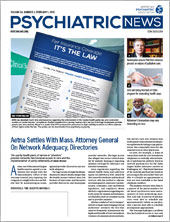The rise in adolescent vaping remains the biggest concern when it comes to secondary students’ use of substances: 21 percent of high school seniors reported vaping nicotine in the past 30 days in 2018, almost double the previous year’s finding, according to the most recent Monitoring the Future survey.
The survey has tracked national substance use among 8th, 10th, and 12th graders at hundreds of schools annually since 1975. It is conducted by the University of Michigan and funded by the National Institute on Drug Abuse.
With 37 percent of high school seniors and 32 percent of 10th graders reporting vaping during 2018, the one-year spikes are among the largest in teen substance use recorded in the past 43 years. That translates into at least 1.3 million additional secondary students vaping nicotine last year as compared with 2017. Studies have shown that nonsmoking adolescents who vape are about five times more likely to have smoked a traditional cigarette one year later, lead study author Richard Miech, Ph.D., M.P.H., research professor at the University of Michigan, said at a press briefing last month announcing the results.
“The policies and procedures in place to prevent youth vaping clearly haven’t worked,” Miech said. “Vaping is reversing hard-fought declines in the number of adolescents who use nicotine. These results suggest that vaping is leading youth into nicotine use and nicotine addiction, not away from it.”
Although nicotine remains the most common substance vaped by adolescents, vaping of the active ingredient in marijuana (9-THC) is also rising at proportionally record levels: nearly 8 percent of 12th graders vaped marijuana in 2018, up from almost 5 percent the previous year, according to the Monitoring the Future survey.
“Vaping is making substantial inroads among adolescents, no matter the substance vaped,” Miech said. “In 2018, we saw substantial increases in vaping across all substances, including nicotine, marijuana, and adolescents who reported vaping ‘just flavoring.’ … If we want to prevent youth from using drugs, including nicotine, vaping will warrant special attention in terms of policy, education campaigns, and prevention programs in the coming years.”
Other notable survey results were as follows:
•
Teen opioid use is declining. Despite the nationwide opioid epidemic, adolescent misuse of prescription opioids and tranquilizers dropped in 2018 to less than half the usage in peak years. Among 12th graders, less than 4 percent misused prescription opioids, less than 4 percent tranquilizers, and less than 1 percent heroin. These findings indicate that the U.S. opioid epidemic of recent years is largely concentrated among adults.
•
Past-year use of illicit drugs other than marijuana held steady at the lowest levels in two decades (ranging from 6 percent of 8th graders to 12 percent of 12th graders). That figure represents a 30 percent drop in the use of these drugs among 12th graders in the past five years.
•
Adolescent use of most other substances held steady in 2018, with prevalence not significantly changing for the following: amphetamines, methamphetamines, alcohol, “extreme binge drinking” (10 or more drinks in a sitting), flavored alcoholic beverages, cocaine, hallucinogens, heroin, inhalants, MDMA (Ectasy or Molly), and marijuana use overall, the survey reported.
•
Annual marijuana/hashish use dropped 1 percent among 12th graders to 36 percent in 2018, yet inched up among 10th and 8th graders to 28 percent and 11 percent, respectively. State marijuana laws have relaxed during the past five years, the researchers noted. Ten states have now legalized recreational use of marijuana for adults over the age of 21.
•
Nearly 6 percent of 12th graders continue to report “daily use” of marijuana. Daily marijuana use continues to hold steady yet outpaces daily cigarette use across all grades, reflecting a steep decline in daily cigarette use. Perceptions of harm and disapproval of marijuana use have trended down among adolescents, with only 1 in 4 seniors agreeing that regular marijuana use poses a great risk—less than half of what it was 20 years ago.
•
Use of synthetic cannabinoids (K2/Spice or sometimes called “fake weed” or synthetic marijuana) dropped significantly in the past five years in all three grades. Past-year use by 12th graders dropped to nearly 4 percent last year from more than 11 percent when it was first assessed in 2011. ■
The Monitoring the Future website can be accessed
here.

